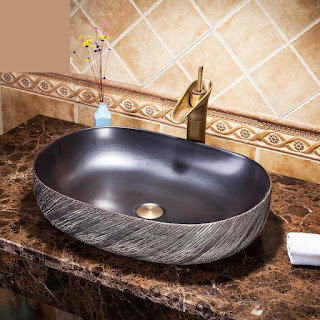With year-round tropical (AKA hot) climate, we are always on the lookout for more ways to cool down. Fans, air conditioners, mist coolers? Been there, used that.
But if you're looking for something that doesn't eat up your energy whilst cooling down - water features are your go-tos. Not just a symbol of good luck in Asian cultures, water features help to lower room temperatures too, adding a hint of zen-like calm to any space. In fact, follow these 5 simple steps, and you could be having your own feature/natural air-conditioner in no time.
Step 1: Find The Perfect Spot For Your Water Feature
It's all about location, location, location. Proper placement is important for optimum power supply, reducing upkeep and allowing fountain materials to look its best.
Here are some tips to narrowing down the right spots:
Somewhere shady: If water features are exposed to direct sunlight or (constant) gusty winds, your feature will have a tendency to dry up easily. Unless you have an automatic re-filler or special pump - that means you'll have to end up refilling it manually on a frequent basis. Moreover, algae grow when exposed to sunlight.
Away From Foliage: Yes, that whole 'Secret Garden' look surrounded by plants and trees look good - only in colder temperatures. With tropical weather, putting your water feature close to foliage will cause the waters to turn dirty easily and promote bacterial growth.
Indoors: Now while mostly an outdoorsy, garden fixture – water features can also work indoors! Water fountains make for a welcoming element in a foyer or grand drawing room. It’s also a soothing fixture in a living room, meditation space or even home office.
Step 2: Match Your Home's Décor
The key to designing a water feature that complements your decor? All you need to do is to find one unifying element. This can be anything from the colour, materials, construct, adornments or origin of the water feature. For instance, a marble fountains with a sculpture or basin would go well with traditional, French or even modern décor with an European touch
A pond-style, tiled feature with greenery fits in with Asian, eclectic or tropical themes. Meanwhile, a small stone-and-deck styled water feature complements Scandinavian decor. For a nature-inspired look, consider a bird bath, babbling rock fountain, waterfalls or basalt columns. For something that's suited indoors, vase fountains, cascades, water walls, and rain curtains are good choices.
Step 3: Pick The Right Materials For Your Feature
The right materials should be practical for the level of maintenance you are comfortable with as well as fit the décor, colour scheme and placement.
Common water feature materials include ceramic, fibreglass, glass, copper, stainless steel, stone, and slate. Here are some rules of thumb to follow when selecting a material:
- Metals are durable, produce a louder sound effect and are easy to clean, especially the stainless-steel versions.
- Porcelain and marble are expensive but it definitely offers a more exclusive look whereas fiberglass is often cheaper but can give off a modern vibe.
- Natural rock water features look great both indoors and outdoors, but can be one of the heaviest materials to use.
Step 4: Power Up Your Feature!
Water features typically need a power source to run its pump and keep the fountains spouting, bubbling, babbling and flowing. For outdoor water features, electric or solar-powered options are available. Do not attempt to DIY when powering the water feature if you aren’t a professional. Also, do not run an extension cord through your garden! Water and electricity make for a dangerous combo, more so when you don’t know what you are doing.
Solar-powered water features are possible and you should consider this especially since our place is never short on sunshine. It’ll save electricity, is safer overall and you’ll have more freedom with placement.
Step 5: Maintaining Your Water Feature In The Long Run
A water feature is pretty to look at and amazingly calming but there is a certain amount of upkeep to consider. Here are some tips to keep your water feature in tip-top shape:
If you aren't much of a housekeeper anyway, consider low-maintenance features, such as floor ponds with dark reflective surfaces that disguise its lining (and also make it harder for algae growth), self-refilling models, and easy-clean materials such as stainless-steel or glass.
Lastly, it’s crucial for water levels to remain at the appropriate levels as allowing it to fall can cause the pump motor to burn out. Thus, if you are doing this manually, it’s best to routinely check your feature. Depending on the placement and conditions of your feature, check water levels every five to ten days.




Comments
Post a Comment